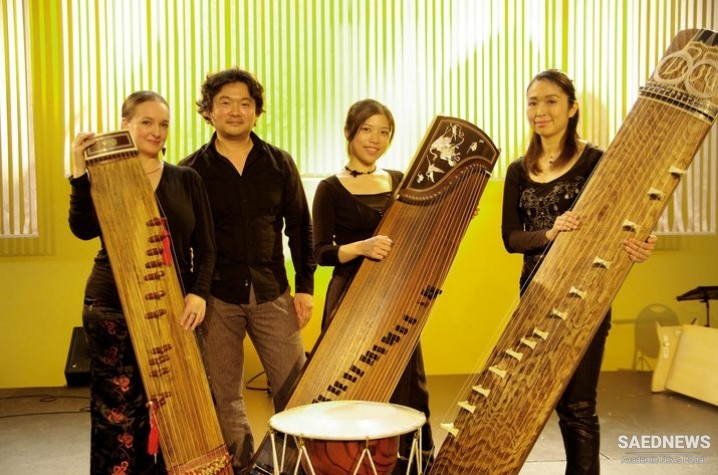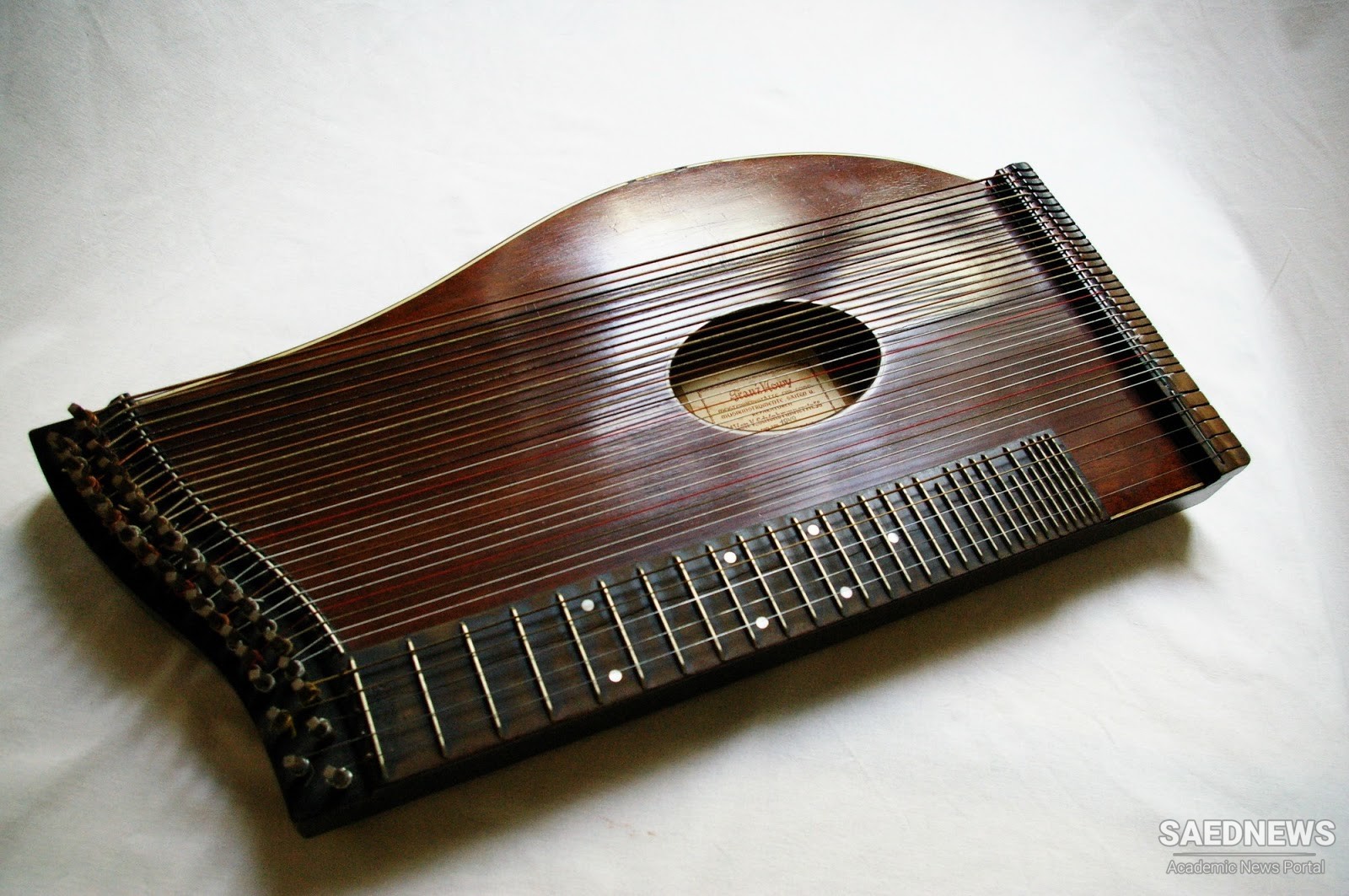The harp was a real polychord; but even the largest antique harps had no more than twenty-three strings at most. There is no possibility left, then, except the board-zither. The Chinese shê, which belongs in this category, had fifty strings in antiquity. A board-zither can be placed either on the ground, or on a table or on the player’s knees; the choice depends upon the customary position of rest. The Greeks did not squat on the floor and they were not accustomed to tables; but they had seats.
Thus, the normal playing position of a Greek zither would have been that of lying across the knees of a sitting musician. The literal translation of the name epigóneion is indeed ‘a thing on the knees,’ as epí means ‘upon’ and góny ‘knee.’ This etymology is far more convincing than the ancient anecdote that a certain EPIGONOS had brought the instrument from Alexandria or Ambracia in Epirus. Etymologies dependent upon an inventor’s name are apt to be false. Julius Pollux’s information that the simíkion was invented by a man named SIMOS must be rejected as well. A connection with the Persian word sm, which means ‘string,’ would be more likely.

Neither an epigoneion nor a simikion has been depicted by sculptors or painters. There is, however, another strange stringed instrument depicted on three later Roman sarcophagi, two in the Louvre and a third one in the cathedral at Agrigenti. The outer appearance resembles a lute; one distinguishes a small, round, bulging body and an unusually wide neck. The strings are numerous, eight to ten, and they are open and played like zither strings. Vertically held with the left hand, the instrument is leaned against the left shoulder. One of the three specimens, on a sarcophagus in the Louvre, is particularly fascinating, as the strings do not reach the top of the neck but end near the middle at different heights, their ends thus forming a diagonal line that descends towards the treble side.
Looking for parallels, we find in a Persian manuscript written in 1345 A.D. an instrument called muis composed of a small, circular body and a long, wide neck without frets. Nine strings are indicated by their lateral tuning pegs, and their upper ends form a diagonal line across the neck. The similarity is so striking that some connection must be supposed. Besides, the mu was said to have been invented in Magnesia in Asia Minor, a town formerly belonging to the Roman Empire. PIPE would be the best translation of the Greek term aulós (plural auloí, in modern pronunciation avlí) and its Latin equivalent tibia, exactly as we have used the word “pipe” to translate Akkadian lîl. The usual rendering of aulós as ‘flute’ is wrong and misleading.
The author cannot forget his old teacher in Greek, who was a victim of this false interpretation. Whenever aulós occurred in a text that we read in class, he did not fail to point out the sensitive ears of his beloved heroes, so obviously superior to the Wagner-glutted ears of modern college boys; a flute, the weakest of instruments, sufficed to inflame their ecstasy and desire for combat! The pipes on vases and reliefs, Greek and Roman, are not flutes, but double oboes of oriental shape, the sound of which could be as shrill and exciting as the sound of their relatives, the bagpipes of modern Scotch regiments. So strong was the power required to blow such pipes that a great many contemporaneous paintings and reliefs show the player wearing a leather band which passes over the mouth and ties at the back of his head, and which is held in place by a thong running over the top of the head. At the mouth it had two holes just large enough to allow the pipes to pass through. This contrivance gave a regular pressure to the cheeks, which acted as bellows, as they do with a glass blower. The Greeks called it phorbeiá, and the Romans capistrum. It is a freak of history that this mouth-band has been preserved in one remote country only—in Java, with her neighboring island Madoera, where the ancient double oboe was used and pictured in the first millennium A.D.


 The Shofar or Keren Horn
The Shofar or Keren Horn














































